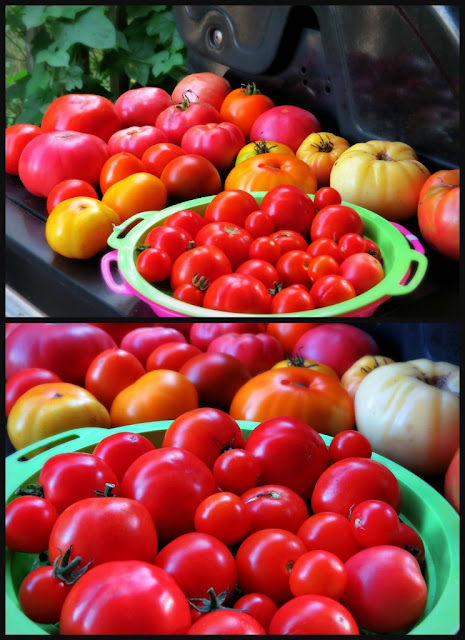After several years of trying various composting methods, I have settled on two types of composting that work best for our household and garden size. For outdoor composting, my favorite bin is the Geobin, and for indoor composting, I use the SCD Probiotics K100 All Seasons Kit with Bokashi. In this post, I will first mention the various outdoor containers and methods that I have tried with only fair results:
We started with the simple method of having two exposed compost piles located along our fence border, about 100 feet from the garden. One pile was for smaller material such as grass clippings, leaves, ashes, straw, and plant-based food scraps; the second pile was for weeds, small twigs, and clippings from bushes – basically, things that might need longer to break down. We turned the first pile once a month. It did yield some compost, but poison ivy infiltrated the heap and we basically abandoned it. We allowed nature to take its course (no turning) with the second pile of larger organic matter which took a couple of years to decompose.
Several years ago, our local extension office sold (at a discount) cube-shaped black plastic compost bins that had some ventilation holes at the top, and a trap door at the base to release the compost that was finished. We purchased two of these bins – one for depositing current plant matter and a full bin that was left to “cook”. These containers also created some good, usable compost until fire ants (rampant in GA) found the food scraps and discovered that this shelter was a perfect place to build large mounds. The ants were resistant to our watering and turning the pile; when disturbed, they always seemed to come back in bigger numbers. We grow organically, so we did not want to use insecticides of any kind, and did not want to introduce the fire ants in this compost to the soil in our vegetable garden. We eventually gave those bins away.
A friend gave us a large cylindrical compost tumbler that is mounted on a frame and has a handle for turning the compost. We tried it for a season, but the compost became extremely heavy to turn, and inside the tumbler, we must have had too much nitrogen as the finished compost had a sludge-like consistency.
I did some research, hoping to find the most efficient outdoor home composting system, and discovered an excellent comparison study done in 2008 sponsored by the Dave Wilson Nursery with UC Sacramento Master Gardeners, county extension agents, and university farm advisors facilitating the test. They compared 10 different compost bins for greatest efficiency and ease of use. Over 8 weeks, they used the same materials, same time intervals, and evaluated the temperature and air circulation, as well as doing a nutrient analysis of the finished compost. The design that placed first among the ten bins was the Geobin made by Presto. http://geobin123.com/
It is a large, open, standing bin with many circulation holes (no lid). Because of the size (higher mass) and holes for circulation, the compost in the Geobin reached the highest temperature (140 degrees F) of the ten bins, and also broke the material down most efficiently.
 |
| Geobin |
I purchased this bin and have been very happy with it. The Geobin composts so quickly, it never stays full for more than a day or two. I keep it in the garden next to our deck where my family can easily empty food or garden scraps every night. Other than attracting slugs (usually found where there are large pieces of decomposing plant matter), pests and odor have not been a problem (occasional bees, birds, and butterflies will visit when there is fresh fruit on top). I turn the pile about once a week and so far, the ants and poison ivy have left it alone, probably due to the heat generated inside the bin.
 |
| Seeds germinating in fertile compost pile |
I wondered at one point last year how to get the finished compost out of the bottom of this large bin if I didn't want to wait until the entire pile had decomposed. I decided to simply lift it up to see if it could be easily moved once compost was in it. To my surprise, the compost stayed in place while I relocated the bin. The majority of the material was fresh at the time this picture was taken, so it held its form perfectly (no spilling over).
 |
| Compost heap holding its shape after moving the Geobin (summer 2013). |
This material turned into beautiful, rich dark compost in less than 6 months.
 |
| March 2014 - The lower, finished part of this pile consists of the grass clippings, etc., from the previous summer. |
I used a pitch fork to transfer the unfinished material back to the relocated bin, and was able to use the finished compost at the bottom for garden beds. It was a much easier process than I expected.
 |
Finished compost ready to add to the garden
|
 |
| Compost applied to the tomato beds |
The Geobin made excellent compost in a reasonable amount of time, and I am anxious to see how well our tomatoes will grow in it this year.
The design below was bound to happen when passions of music, gardening, and photography coexist in one mind!
 |
| My musikgarten |
Please stay tuned for part two of this blog series when I share experiences and techniques for indoor composting.
Blessings on your gardens!
~Karen


































































